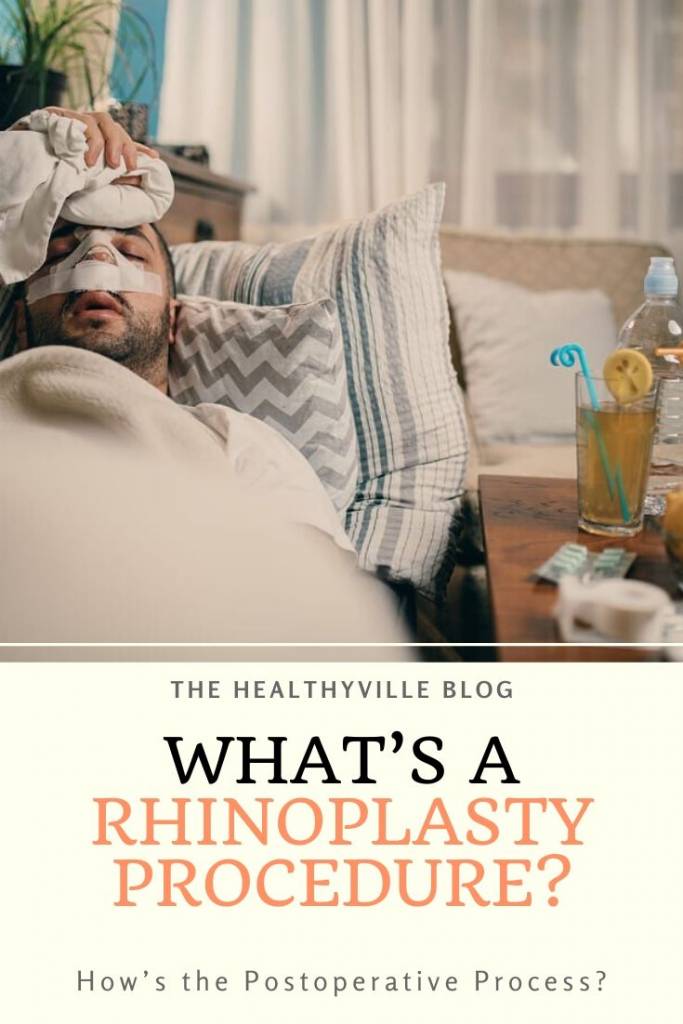A rhinoplasty procedure is currently a very safe surgery, which rarely requires hospitalization. The risks of complications are low, but to avoid them, follow the tips.
Rhinoplasty is one of the surgeries on highest demand currently by both women and men. Most of the time people do it for aesthetic purposes, but there are also a good number of cases in which it is necessary for reasons of health and quality of life.
The most common knowledge is that rhinoplasty does not cause complications, since it is a safe procedure, a routine even. This does not mean that you do not have discomfort in the postoperative period or that you do not require the care.
As is often the case with any operation, the good outcome of surgery also depends precisely on postoperative care. Although the operation does not have high complexity, it does require that each patient strictly follow the medical indications.
What is a rhinoplasty procedure?
Rhinoplasty is a surgical procedure doctors perform with the objective of changing the appearance of the patient’s nose, correcting a functional problem of the nose, or both. When the purpose is to correct an abnormality of the nasal airway and at the same time change the appearance of the nose, the surgery is called septoplasty.
Through the rhinoplasty you can modify the bone of the nose, the cartilage of the nose and the skin that forms it, or all at once. This surgery does not simply seek to reshape the nose, but to achieve facial harmony. Therefore, doctors take into account all facial features to make changes.
A rhinoplasty can increase or decrease the size of the nose. Also modify the shape of the tip, make the opening of the nostrils smaller or transform the angle that forms between the nose and the upper lip of the mouth. Rhinomodelation is an alternative to change the shape of the nose without going to surgery.
Types
There are basically two rhinoplasty procedure types: open and closed. The open is one in which an incision is made in the middle part of the nose to access the deep areas. The closed, however, is done through the nostrils and does not require external incisions.
The majority of rhinoplasty are outpatient surgeries and only in special cases do they require a short hospitalization. Generally the procedure does not take more than two hours and only requires local anesthesia coupled with a mild sedation. In some cases general there may be a need for anesthesia.
Typically, changes in the tip of the nose or increases in the nose require an external incision. However, if the nose is only going to be tuned, that type of incision is not usually made. Sometimes a hard splint is required to keep the bone stable after surgery or a soft splint to keep the septum stable.
The postoperative process
Most commonly, the patient remains in the hospital for 6 to 12 hours after which he will be discharged. From the first moment, appropriate measures must be taken to avoid complications, which are mainly:
- Nasal obstruction
- Nose bleed
- Infections
The most advisable thing is that there is rest within 24 hours after rhinoplasty. It is not necessary to remain in bed all the time, but to minimize activity. In fact it is not convenient to perform any intense physical exercise in the next 15 days.
Read more: Nasal Polyp Symptoms, Causes and Treatment
In the first hours a mucosal flow appears that you should gently clean with a gauze. You should cough or sneeze with your mouth open and sleep in a semi-sitting position to reduce inflammation.
In the following days the nose may become clogged due to secretion. To uncover it, it is best to irrigate it with a few drops of physiological serum, in each pit, every 30 minutes. Maintain the hygiene of the pits with a swab and very gently.
Care
After a week it is very rare for the inflammation to remain. Anyway, it is better to avoid leaving the house to the fullest since changes in temperature make scarring difficult. Typically, the first postoperative consultation takes place after 7 days and the doctor will indicate the care that should be followed.
In the next three weeks you should be careful with the blows and avoid wearing glasses on the nasal bridge. It is not good to carry large weights since this can cause difficulties. Also it is not convenient to perform strong sports, much less if they are contact.
You must not travel by plane during the 15 days after the operation since the pressurized cabins of the same are a factor that can cause bleeding.
Don’t forget to SHARE the rhinoplasty procedure details with your friends and family on your social networks!

